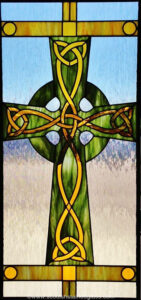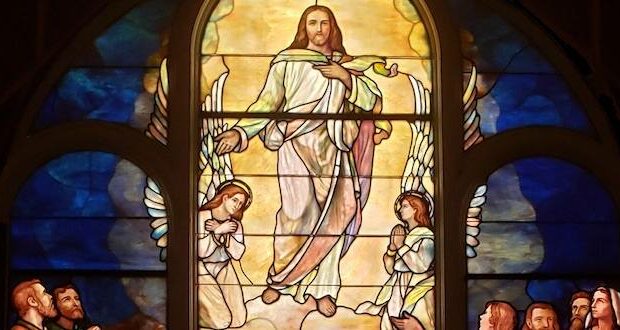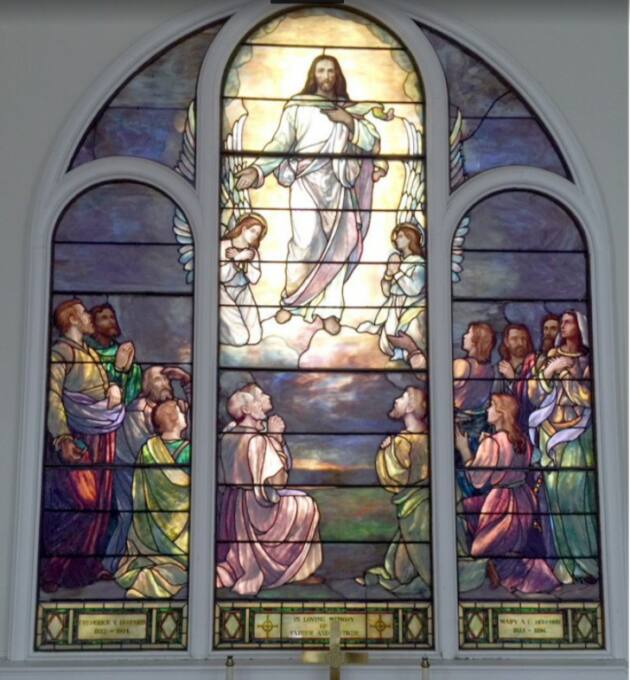Churches and cathedrals throughout the American Midwest and beyond are approaching a silent, untold armageddon that will impact tens of thousands of beautiful works of art within the coming years: the deterioration of one-of-a-kind stained glass windows.
Experts and stained glass enthusiasts, however, say that with careful attention and swift action, these important historical pieces can be saved for the admiration of congregations to come.
When the United States became the world’s leading industrial power at the turn of the 20th century, largely due to the arrival of millions of immigrant workers and farmers, high concentrations of churches were built in the Midwest during the early 1900s. They lovingly crafted more of these historic houses of worship as they moved westward. Craftsmen installed stunning stained-glass features in decorative windows that told stories through imagery and colored light illuminating into the buildings.
For the people inside the church, stained glass delivered light, both literally and spiritually.
While glass may last forever, the metal support strips, known as lead came that holds the stained glass together, deteriorates 100 to 120 years after its construction due to exposure to the elements. The location of the windows, maintenance practices, protective coverings and various other factors all impact this rate of deterioration. If left unrestored, these stained-glass windows will become damaged beyond repair. Restoring stained-glass windows costs approximately 20% of their total value so it’s definitely less expensive to restore than replace.
READ: This St. Louis cathedral is a must-see
While most stained-glass windows along the East Coast have already been restored, stained-glass pieces across the Midwestern and Western states are just now reaching a century of life. Thousands of church windows will require full restorations in the coming years. Unfortunately, there are dwindling numbers of qualified stained-glass companies available to address the scope of work needed to protect some of our nation’s most treasured artwork.
With so much history embedded throughout these houses of worship, stained glass often becomes an essential part of worship and the community.
“We’re a traditional church with walnut pews, a choir, pipe organist, and stained glass windows, yet young people still choose our church,” said Pastor Dr. Michael Passmore of Central Christian Church in San Antonio, Texas. “When we ask them why, their answer is always the same: ‘We can go to contemporary prayer service seven nights a week all over San Antonio, but on Sunday morning, we like to go to a church that feels like church.’ They want time for quiet reflection – a place to experience the history and vibrancy of our stained-glass windows. The church has been here for over 100 years. When we restored the windows, it’s a statement that we plan to be here for another 100 years.”

Central Christian Church in San Antonio, Texas. Three of four phases are complete. Here you can see a photo of the deteriorating lead caming that holds the individual glass pieces together. There is also a photo of the entire interior of the church, displaying the grandeur of the stained-glass windows.
Identifying First Signs of Stained-Glass Deterioration
Martin Faith, founder and president of Denver-based Scottish Stained Glass – one of the only qualified stained glass conservation studios in the nation – outlines the signs that may indicate a church’s stained glass windows are ready for restoration:
- Concave, convex or bulging glass;
- excessive dirt buildup;
- cracked, damaged, or missing glass pieces;
- detached reinforcement bars;
- softened, brittle, or cracked lead framing;
- cracked soldered joints;
- yellowing Plexiglas or discoloration, or a white film appearing on the glass itself.
Should any of these signs be present, a stained-glass restoration expert should step in to help before more damage occurs.
“The sooner you can restore your stained glass, the better, especially as we enter this time period where thousands of churches will need restoration,” explains Faith, who brings to the U.S. his expertise of restoring churches from his native Scotland. “You don’t want your stained glass to be on its last legs and risk damaging it beyond repair. The sooner you can start restoration, typically the less expensive the investment is.”
Kick-starting a Stained-Glass Restoration Project
With very few qualified stained glass conservation studios in the U.S., finding the right studio makes all the difference in preserving a part of a church’s history. It’s important to research studios carefully to determine their years of experience and level of expertise before starting a restoration project. Faith explains what to look for in a restoration provider:
- Make sure to check if the studio has an A+ rating with the BBB.
- Ask for two to three references for similar-sized projects.
- Verify they have normal liability insurance coverage for at least $5 million, workers compensation insurance, and a certificate pursuant to the Toxic Substance Control Act.
- Always inspect projects they’ve completed, if possible, and make sure they provide full documentation of any work done.
- If the restoration is provided by an insurance claim, it’s critical to find the right studio to assess the project. And make sure the correct insurance payout amount is being provided before work begins.
How to Fund the Project
 Stained-glass restoration is a complex process that often takes months or years to complete. It requires significant financial funding, which can seem like a daunting challenge for churches, but community members are eager to help preserve these works of art. Jerry Dittman, a member of the First United Methodist Church of Mesquite, Texas, in Texas shared his congregation’s experience with funding: “There was a big donation from our congregation members to fix the roof. Then we ended up getting a check from insurance for the roof repairs and asked the congregation to use their donations to fix the stained-glass window, ceiling, facade, and brick and mortar instead. They agreed. It was a big project, but it looks gorgeous.”
Stained-glass restoration is a complex process that often takes months or years to complete. It requires significant financial funding, which can seem like a daunting challenge for churches, but community members are eager to help preserve these works of art. Jerry Dittman, a member of the First United Methodist Church of Mesquite, Texas, in Texas shared his congregation’s experience with funding: “There was a big donation from our congregation members to fix the roof. Then we ended up getting a check from insurance for the roof repairs and asked the congregation to use their donations to fix the stained-glass window, ceiling, facade, and brick and mortar instead. They agreed. It was a big project, but it looks gorgeous.”
The best way to get your project and fundraising started is to form a committee and dedicate someone who’s interested in stained-glass restoration to lead the effort. When churches experience natural disasters, severe weather, or vandalism, insurance claims can be a major source of funding as well.
Restoration is a long-term investment to preserve the integrity and beauty of America’s stained-glass windows that are brimming with history. In addition to enjoying their stained glass for decades to come, congregation members are also often stunned seeing the glass restored to its original state. “It’s remarkable, especially when backlit at night. We get compliments all the time from people that just drive by. An amazing transformation,” Dittman explained.
By ChristiAnne Lunsford
ChristiAnne Lunsford is a freelance writer who resides in Arizona.
 Metro Voice News Celebrating Faith, Family & Community
Metro Voice News Celebrating Faith, Family & Community











